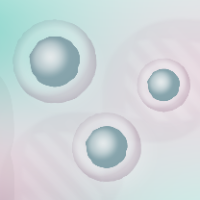2D and 3D iPSC-CM models for studying cardiac toxicity and disease
Cell & Gene Therapy Insights 2025; 11(2), 355–376
DOI: 10.18609/cgti.2025.043
Advances in human induced pluripotent stem cell (iPSC) technology have enabled the generation of robust, cardiac-specific, in vitro systems for cardiac disease modeling, drug screening, and cardiotoxicity studies. Human iPSCs can be differentiated into iPSC-derived cardiac myocytes (iPSC-CMs), a model cell population able to recapitulate the phenotypes of complex cardiac diseases—mirroring both the observations made with in vivo animal models and the clinical manifestations seen in human patients. To improve the physiological relevance of iPSC-CM model systems, researchers are shifting from 2D to 3D models and incorporating a variety of cardiac specific cell types including cardiac fibroblasts, and vascular endothelial cells. In this paper, we will review the development of 2D and 3D iPSC-CM models, survey the various disease contexts in which these models have been utilized, and discuss the benefits and limitations of each strategy.
